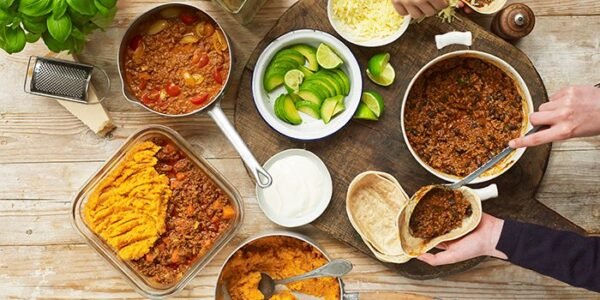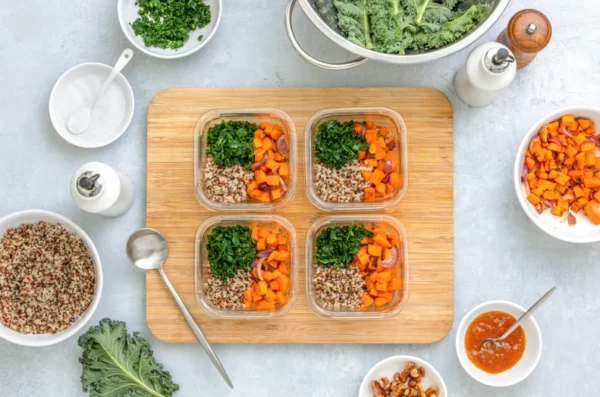For the 42% of Brits who have vowed to improve their diet in 2024, meal prepping is likely to be a key feature of their new approach to cooking.

Pre-preparing lunches for the working week can be an easy way to maintain a healthy diet, ensuring you’re consuming a balance of the key food groups.
With this in mind, Catherine Hickabottom, Learning and Development Manager at the food hygiene experts High Speed Training, offers 6 tips to help you meal prep efficiently, saving both time and money.

1. Invest in good quality, air-tight containers for freshness
Catherine says: “Air-tight containers are essential for storing leftovers safely, due to their ability to prevent bacterial growth, minimise odour transfer, retain moisture and extend the shelf life of food.
“By sealing leftovers correctly, the risk of contamination is reduced, and the oxidation process is slowed down, maintaining the quality and safety of the stored food. Good quality containers are also likely to last longer with repeated use, compared to cheap containers you’ve saved from a takeaway, for example.”
2. Opt for foods that improve over time
“Another factor to consider when planning your office lunches is making foods that can improve over time, for example, marinades, stews, sauces, curries or broths.
“You can make these a few days before and store them in the fridge until ready to use. Many of these dishes can be a little time-consuming to make, but you’ll get great-tasting food at a fraction of the effort when it comes to safely reheating.”
3. Ensure meals are completely cool before freezing or chilling
Catherine explains: “It’s important to let hot food cool to room temperature before you refrigerate or freeze it, in order to maintain good food hygiene. This is because you can run the risk of raising the temperature of the fridge or freezer. If surrounding frozen items partially thaw and refreeze, this could cause bacteria to grow and contaminate the food. Furthermore, if foods thaw and refreeze, the taste and texture of the food can be affected.
“There are a number of ways you can speed up the process of cooling food if you do not have time to do so slowly. For example, you can cover pans of hot food and move them to a colder area, stir regularly while it is chilling or divide food into smaller portions.”
4. Plan recipes and meals within a theme
“Planning meals which are part of a theme or specific cuisine is a great source of inspiration, and challenges you to try out new methods of cooking.
“Recipes from the same cuisine often have a lot of crossover with similar ingredients used. Therefore, you can ensure your meals across the week are varied whilst avoiding food waste.”
5. Reheat your meals correctly
Catherine says: “There aren’t necessarily any cooked foods that you should not reheat. However, we do recommend that you are particularly cautious when reheating meat, seafood or rice.
“If you cool, store and then reheat these foods properly, they should be safe to eat without the risk of food poisoning. It is crucial that all reheated food is steaming hot all the way through.”
6. Try one-pot meals
Catherine suggests: “Opt for recipes that involve minimal cooking equipment, like one-pot meals. These methods not only save time on prep and cleanup but also reduce energy costs.
“Roasting vegetables and proteins together on a baking tray or cooking an entire meal in one pot minimises the number of dishes you need to wash, making your meal-prepping process more efficient. Plus, these meals are easier to transfer to the office, requiring only one container.”
